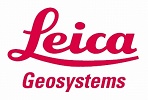

THANK YOU TO THE SPONSOR:

The Technical Seminar on Reference Frames in Practice was held in Hanoi on 20-21 April 2019. The main focus was on reference frames in general with a specific focus on UN initiatives and reference frame examples in the Asia-Pacific region. A BELS+ Training was also completed on the second day of the seminar. The Seminar was organized by FIG Commission 5, in conjunction with the International Association of Geodesy (IAG), the United Nations International Committee on GNSS (UN ICG), UN Global Geospatial Information Management – Asia Pacific (UN-GGIM-AP), BELS+, and the Vietnam Association of Geodesy, Cartography, and Remote Sensing (VGCR). The seminar was held in the InterContinental Landmark 72 Hotel in conjunction with the FIG Working Week 2019 at the Vietnam National Convention Center.
There were 43 participants including presenters from around the world representing 20 different countries. Countries represented included Australia, Austria, Bangladesh, Belgium, Fiji, Germany, Italy, Japan, Mexico, New Zealand, Pakistan, Philippines, Qatar, Russian Federation, Singapore, Spain, Uganda, United States, and Viet Nam. Attendees represented a mix of academic, government, and commercial institutions.
Dan Roman, Chair of FIG Commission 5
SATURDAY 20 APRILReference Frame in Practise |
||
|
|
Welcome and Opening Remarks Session 1: International Geodesy Initiatives and Geodetic InfrastructureICG at UN UN-GGIM-AP |
|
| 10:00-10:30 | Coffee Break | |
| 10:30-12:00 |
Session 2: Introduction to Reference FramesIntroduction Geodetic Reference Frame Theory Introduction Vertical Reference Frames Reference Frames, Datum Transformations and GIS |
|
| 12:00-13:00 | Lunch in Saigon Room, 5th floor | |
| 13:00-14:30 |
Session 3: Case Studies 1Case Study of Vietnam Case Study of Japan Case Study of USA |
|
| 14:30-15:00 | Coffee Break | |
| 16:00-17:30 |
Session 4: Case Studies 2Preliminary Study on 3D Reference Frames for the Russian
Federation Case Study of New Zealand Re-establishment of the PNG94 geodetic datum and vertical
reference system in the Papua New Guinea oilfields after the Mw
7.5 earthquake on 26th February 2018 |
|
| 16:30-17:00 | Break | |
| 17:00-18:30 |
Sponsor Presentations and RFIP Closing Remarks |
|
SUNDAY 21 APRILBELS+ European GNSS Solutions for Surveyors |
|||
|
Also during the training course, participants can practice with NAVISIM – a Softwared Defined Radio GNSS signal generator – which can be used in laboratory for testing and validating the operation of GNSS receivers in different harsh real-world scenarios, as well as for training GNSS users (surveyors). |
|||
|
|
Introduction to BELS + Introduction to Galileo and its services Overview of positioning techniques and code pseudorange
modelling |
||
| 10:00-10:30 | Coffee Break | ||
| 10:30-12:00 | Precise Point Positioning with carrier phase A. Rovira (UPC) [handouts] |
||
| 12:00-13:00 | Lunch in Da Nang room, 5th floor | ||
| 13:00-14:30 | GNSS Data Processing Laboratory Exercises with gLAB A. Rovira (UPC), NAVIS [handouts] Before the session begins, please download the software - The software can be downloaded from the following wetransfer links: Linux Version (163 Mb):
https://we.tl/t-CzBdyzpuW4 The files will be deleted in 1 week. |
||
| 14:30-15:00 | Coffee Break | ||
| 15:00-16:30 | NAVISIM introduction and demo NAVIS |
||
| 16:30-17:00 | Coffee Break | ||
| 17:00-17:30 | EU Companies pithces | ||